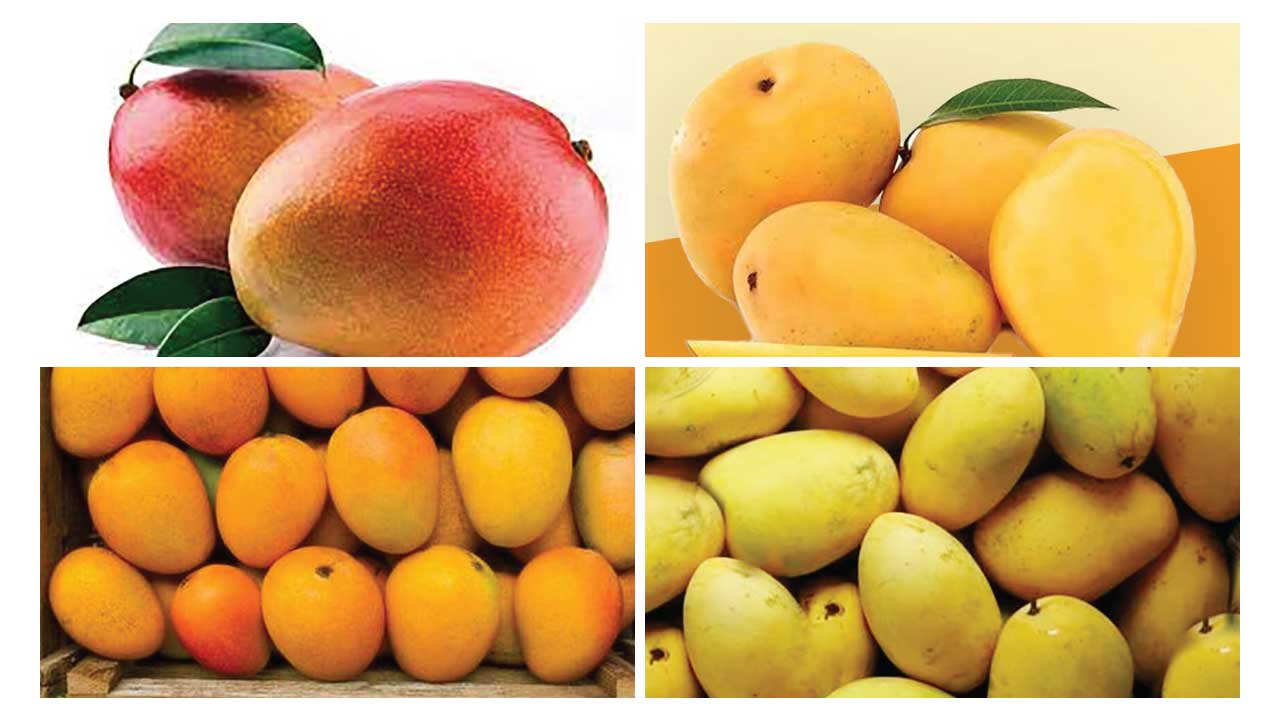If you are looking for the top 10 Mango Varieties in India, you are in the right place. India, often referred to as the “Mango Capital of the World,” is home to some of the most delicious and diverse mango varieties. Each region in India produces its own distinct type of mango, offering a wide range of flavors, textures, and aromas that cater to different palates. In this article, we’ll explore the top 10 mango varieties in India, delving into their unique characteristics, origins, and culinary uses.
1. Alphonso (Hapus)
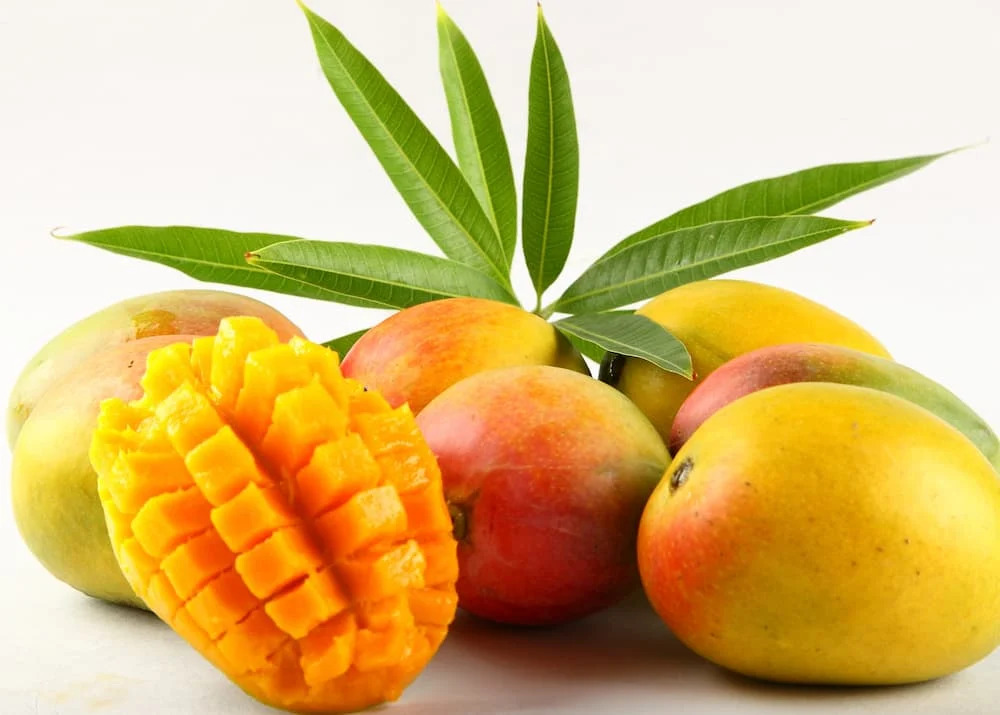
Region: Maharashtra (Ratnagiri, Devgad, Sindhudurg)
Flavor Profile: Alphonso is celebrated for its rich, creamy texture and sweet, buttery flavor, with subtle notes of saffron. The flesh is non-fibrous, making it incredibly smooth and enjoyable.
Aroma: Highly aromatic, with a fragrance that is both floral and fruity.
Appearance: Alphonso mangoes are medium-sized with a bright golden-yellow skin, often with a reddish blush on the top.
Season: April to June
Unique Characteristics: Alphonso is known as the “King of Mangoes” for its exceptional taste and texture. It has a thin skin and is best enjoyed fresh, though it’s also commonly used in making mango pulp, ice creams, and shakes. Due to its high demand, Alphonso is one of the most expensive mango varieties, especially in international markets.
Best Uses: Fresh consumption, desserts, mango pulp, ice cream.
2. Kesar
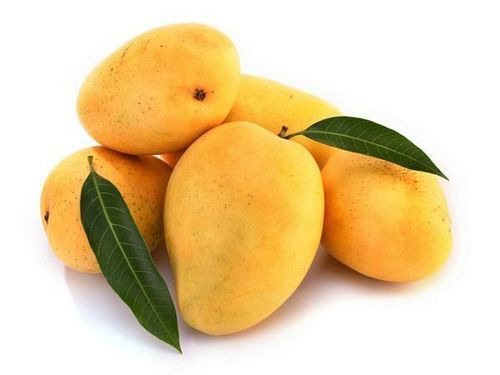
Region: Gujarat (Girnar)
Flavor Profile: Kesar mangoes are known for their intensely sweet and slightly tangy flavor. The pulp is juicy, smooth, and deep saffron-colored, which is where the name “Kesar” (saffron) comes from.
Aroma: Strong, sweet, and inviting, making it a favorite in Indian households.
Appearance: Medium-sized with a roundish shape and golden-yellow skin, sometimes with greenish patches.
Season: May to July
Unique Characteristics: Often referred to as the “Queen of Mangoes,” Kesar mangoes are cherished for their vibrant color and rich flavor. They have a relatively short shelf life, making them best enjoyed fresh. This variety is particularly popular in Gujarat and Maharashtra.
Best Uses: Fresh consumption, mango lassi, desserts, juices.
3. Dasheri
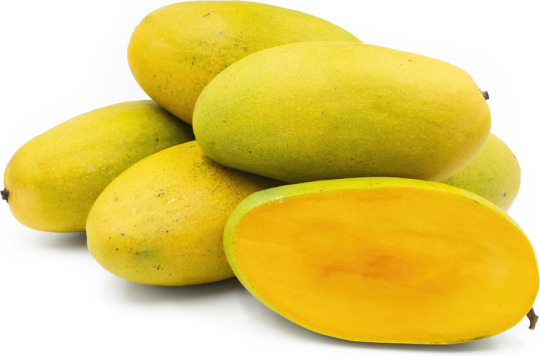
Region: Uttar Pradesh (Malihabad)
Flavor Profile: Dasheri mangoes are sweet with a slight tang, featuring a smooth, fiberless texture that melts in the mouth.
Aroma: Mildly sweet and fruity, often considered refreshing.
Appearance: Long and oval with a greenish-yellow skin that turns golden when ripe.
Season: June to August
Unique Characteristics: Dasheri is one of the oldest and most popular mango varieties in India. It is especially well-known in the northern regions, particularly in Uttar Pradesh. The variety’s elongated shape and smooth, juicy flesh make it a staple in many households. It’s also a favorite for making pickles and aamras, a traditional mango puree.
Best Uses: Fresh consumption, pickles, aamras, smoothies.
4. Langra
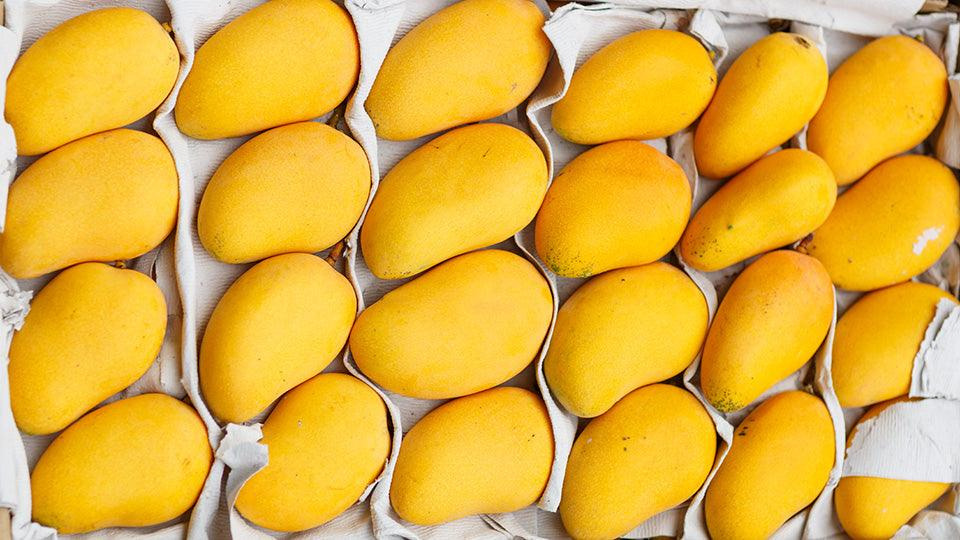
Region: Uttar Pradesh (Varanasi)
Flavor Profile: Langra mangoes are known for their sweet and slightly tangy flavor, with a hint of citrus. The flesh is juicy and fibrous, making it a great choice for both fresh consumption and culinary applications.
Aroma: Refreshingly sweet with a hint of sourness, characteristic of citrus fruits.
Appearance: Medium-sized with a greenish skin, even when ripe, and an oblong shape.
Season: June to July
Unique Characteristics: The name “Langra” is derived from the Hindi word for “lame,” named after a farmer who first cultivated this variety. Langra mangoes are particularly popular in Varanasi and surrounding regions. They are known for their late ripening season and are often used in making traditional Indian desserts like aamras and mango-based chutneys.
Best Uses: Fresh consumption, aamras, chutneys, salads.
5. Himsagar
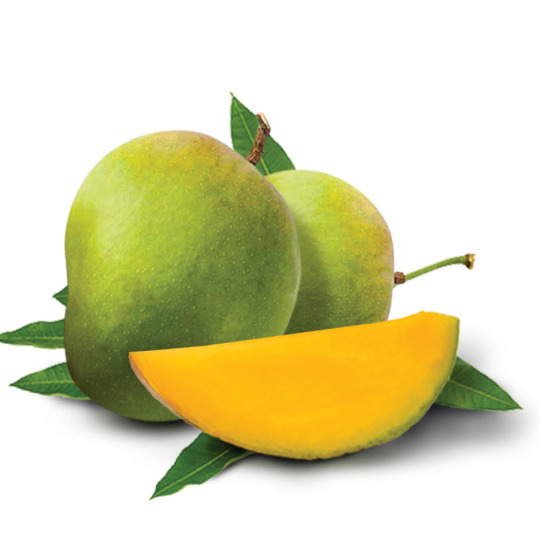
Region: West Bengal, Odisha
Flavor Profile: Himsagar is prized for its exceptionally sweet flavor and non-fibrous, creamy texture. The pulp is thick and juicy, with no fibers, making it one of the best mangoes for desserts.
Aroma: Rich and sweet, with a distinctive fragrance that lingers.
Appearance: Medium-sized with a yellowish skin and a slightly oblong shape.
Season: May to June
Unique Characteristics: Himsagar is often regarded as one of the finest dessert mangoes in India due to its luscious sweetness and smooth, fiberless flesh. This variety is primarily grown in the eastern regions of India and is highly sought after during its short season. Its rich, creamy pulp is perfect for making mango-based sweets and smoothies.
Best Uses: Desserts, smoothies, fresh consumption, mango shakes.
6. Totapuri

Region: Andhra Pradesh, Karnataka, Tamil Nadu
Flavor Profile: Totapuri mangoes have a unique, tangy flavor with a hint of sweetness. The flesh is firm and slightly fibrous, making it ideal for salads and pickles.
Aroma: Mild and fresh, with a tangy undertone.
Appearance: Large and oblong with a distinctive beak-like pointed end, and a bright green to yellow skin.
Season: June to July
Unique Characteristics: Totapuri, also known as Bangalora or Sandersha, is easily recognizable by its parrot-beak shape. It is less sweet than other mango varieties, making it a popular choice for savory dishes like salads, pickles, and chutneys. This variety is widely used in the food processing industry for making mango pulp and juice.
Best Uses: Salads, pickles, chutneys, mango pulp.
7. Banganapalli (Benishan)
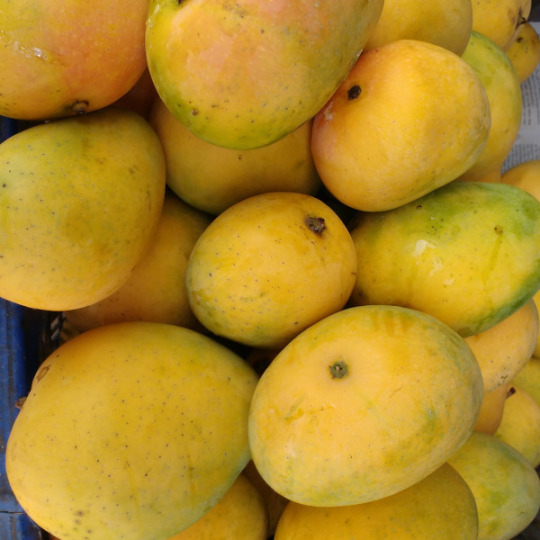
Region: Andhra Pradesh (Banganapalle)
Flavor Profile: Banganapalli mangoes are sweet with a slightly tart undertone. The flesh is firm, smooth, and non-fibrous, with a golden-yellow color.
Aroma: Sweet and mild, with a hint of tropical fruit.
Appearance: Large and oblong with a golden-yellow skin, often with a small tinge of green.
Season: April to June
Unique Characteristics: Banganapalli, also known as Benishan, is one of the most popular mango varieties in South India. It is cherished for its long shelf life and versatility. The firm, non-fibrous flesh makes it an excellent choice for fresh consumption as well as for making pickles and preserves. This variety is also a favorite for export due to its robust nature.
Best Uses: Fresh consumption, pickles, preserves, export.
8. Neelum
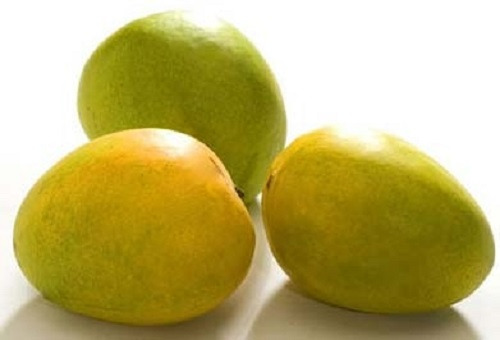
Region: Tamil Nadu, Andhra Pradesh
Flavor Profile: Neelum mangoes are sweet with a slight tang, featuring a firm, non-fibrous flesh that is easy to slice.
Aroma: Sweet and floral, with a tropical scent.
Appearance: Small to medium-sized with an oval shape and a yellowish skin that may have a slight blush.
Season: June to August
Unique Characteristics: Neelum is a late-season mango variety that is highly valued for its extended availability. It is small to medium in size, making it convenient for eating out of hand. Neelum mangoes have a long shelf life and are often used in making juices and fruit salads. This variety is also a popular choice for export due to its durability.
Best Uses: Fresh consumption, juices, fruit salads, export.
9. Imam Pasand

Region: Andhra Pradesh, Tamil Nadu, Telangana
Flavor Profile: Imam Pasand mangoes are known for their complex flavor, which combines sweetness, tanginess, and a slight spiciness. The flesh is smooth, soft, and non-fibrous, offering a luxurious taste experience.
Aroma: Rich and fruity, with an exotic fragrance.
Appearance: Large and oval with a greenish-yellow skin that turns golden when fully ripe.
Season: May to June
Unique Characteristics: Imam Pasand is a rare and highly prized mango variety, often referred to as the “King of Mangoes in the South.” Its unique flavor profile makes it a favorite among mango connoisseurs. This variety is known for its large size and rich, smooth flesh, which is perfect for fresh consumption and gourmet dishes. Due to its limited availability, Imam Pasand is one of the more expensive mango varieties.
Best Uses: Fresh consumption, gourmet recipes, luxury fruit markets.
10. Mallika
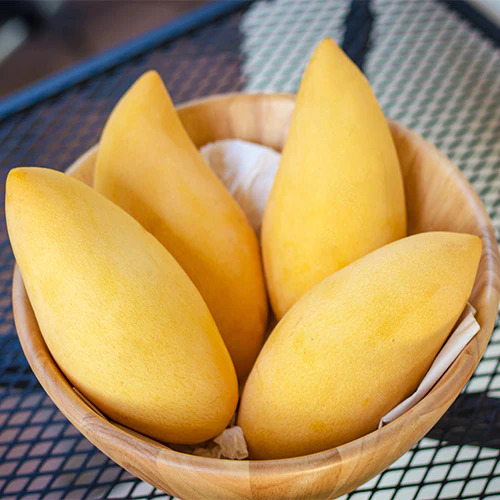
Region: Hybrid (Neelum and Dasheri)
Flavor Profile: Mallika mangoes are exceptionally sweet, with a rich, complex flavor that includes notes of melon, citrus, and honey. The flesh is smooth, non-fibrous, and has a deep orange color.
Aroma: Intensely sweet and fruity, with a honey-like fragrance.
Appearance: Medium-sized with an oblong shape and a bright yellow skin.
Season: May to July
Unique Characteristics: Mallika is a hybrid variety, resulting from a cross between Neelum and Dasheri. It has quickly gained popularity due to its exceptional sweetness and rich flavor. The smooth, non-fibrous flesh makes it ideal for making mango pulp, juices, and desserts. Mallika mangoes are best enjoyed slightly chilled to fully appreciate their flavor.
Best Uses: Fresh consumption, mango pulp, juices, desserts.
Conclusion
India’s diverse climate and rich soil contribute to the cultivation of some of the world’s most beloved mango varieties. From the creamy and luxurious Alphonso to the tangy and versatile Totapuri, each variety offers a unique taste experience. Whether you’re a mango enthusiast or a casual consumer, these top 10 mango varieties in India are sure to delight your palate with their rich flavors, captivating aromas, and unique characteristics.
Enjoying these mangoes fresh, in desserts, or in savory dishes is a journey through India’s rich agricultural heritage, offering a taste of the country’s diverse regions. Whether you’re savoring the buttery richness of Alphonso or the tangy punch of Langra, these mangoes are more than just fruit; they are a celebration of India’s love affair with the “King of Fruits.”
Source: Times of India
